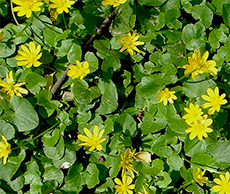
An invasive species is an aggressive non-native species that takes over the habitat of species formerly growing or living in an area. Invasive species are either plants or animals that cause both ecological and economic damage. Invasive species management is necessary to keep them in check.
At Litzsinger Road Ecology Center (LREC), when we refer to invasive species, we are mostly dealing with invasive plant species. Invasive plants are frequently plants that were intentionally introduced by humans. In some cases, immigrants brought plants with them to have a touch of home in their new surroundings. In other cases, a species might have been brought due to a perceived horticultural value. When these plants are introduced, they are often able to out-compete native species. Some aggressive native plants can cause similar problems.
 LREC has produced a brochure detailing identification information and removal recommendations for ten of the most threatening invasive species of the River des Peres watershed. Native alternatives are also listed. You can
LREC has produced a brochure detailing identification information and removal recommendations for ten of the most threatening invasive species of the River des Peres watershed. Native alternatives are also listed. You can